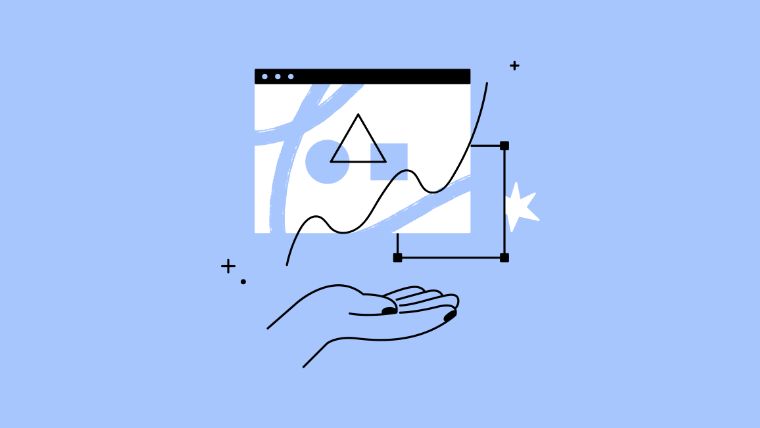The term “enablement” is still a little vague. Most of us are familiar with sales enablement—the content, tools, and processes to help salespeople sell.
But there’s been a rise in other types of enablement, too. Customer enablement. Customer success enablement. Product enablement.
At Intellum, we think of enablement as delivering relevant and timely learning resources to the people who matter most: customers, partners, and/or employees. Enablement empowers people to do their job and/or to use our product(s) well.
In this blog, we’ll share five elements of effective customer enablement—along with tools that can help.
Author’s Note: This blog is based on a past Underscore episode on enablement, featuring insights from one of our Education Program Managers, Jordan Hopkins. Just want to give credit where credit is due!
1. Multidisciplinary and Collaborative
Effective enablement is a team effort. You might work with product managers as internal subject matter experts (SMEs) to develop content. You might work with product marketing or customer marketing managers to distribute that learning to customers as part of the go-to-market process.
Here’s an example of the people you might collaborate with as part of customer enablement:

Tools to Support Multidisciplinary & Collaborative Enablement
When you’re coordinating across teams, it’s important to use project management and collaboration tools that support this process.
Here are examples of tools you might use:
- Project Management: Asana, Trello, Monday.com (Useful for tracking what needs to happen, by who, and by when)
- Ideation & Storyboarding: Mural, Miro, Jamboard (Useful for brainstorming and mapping out what enablement will look like)
- Content Development: Notion, Google Docs, Coda (Useful for not only developing content, but tracking when it was published and might need to be reviewed and updated again)
- Communications: Slack, Intranet, Email (Useful for sharing out new and updated content internally)
2. Human First
When you’re designing learning it’s important to remember there are people on the other end of the screen. They’re not just personas—they’re real people who are watching long videos and webinars, pushing buttons to progress through eLearning, etc.
To keep the humans top of mind, we need to consider two questions:
- Are we addressing their needs and pain points with our learning content?
- Are we listening to the people we’re creating learning for?
As you scale your content development for multiple audiences, there are still ways to make sure your content still resonates with each segment of your audience (such as through adaptive learning).
These tools can help keep your learner persona(s) top of mind:
- Voice of Customer Research: Conduct surveys, interview people who use your product, and watch learners use your product to get real feedback on what they need help with
- A/B Test: Test two different variations of your learning to see which results in higher learner engagement and effectiveness
- Measure Engagement: Lean into what’s working by looking at the metrics
- Needs Analysis: A training needs analysis can help objectively identify gaps and opportunities for new training content
3. Contextual
Great education and enablement materials meet learners where they’re at. Learning science research shows that learners should need opportunities to engage in collaborative learning. Providing opportunities for interaction across the entire customer journey supports knowledge construction and learner empowerment.
You can contextualize learning with the following tools:
- Dynamic Learning Platforms: Dynamically serve content based on who the learner is and where they are in their learning journey
- In-app Modals: Deliver inline learning or product tours using digital adoption tools like Pendo, Appcues, or UserPilot
- Social and Chat Elements: Give learners access to deep, experienced knowledge that’s harder to articulate and mentorship from more experienced employees and/or peers
- Searchable Content: Contextual help should be easy to find and searchable, regardless of what type of resource it is
4. Authentic and Valuable
M David Merrill said it best in First Principles of Instruction: “Does the instruction involve authentic real-world problems or tasks?”
If our goal is to empower learners, it needs to solve their current problems. How do we know what these problems are? We listen to what they tell us! Customers reach out to customer success managers and support teams to share what they need help with. Customers post in communities the problems they’re currently facing.
Here are Jordan’s favorite tools for making sure learning is authentic and valuable:
- John Keller’s ARCS-V Model: Centers on five main components: Attention, Relevancy, Confidence, Satisfaction, and Volition
- Case Studies: Root learning in real-world tasks and problems
- Learner Interviews: Talk to learners before designing a solution
5. Iterative and Flexible
Finally, effective enablement is iterative and flexible. “Not everything you create is going to go over well with your audience,” Jordan said during the webinar. He then shared this advice: “Maintain a humble mindset that enablement can always be improved.”
Think of it like a guitar: As you play a guitar, the strings get a little warped and, over time, need tuning. As we learn more about how people work and learn, it’s only natural for us to tweak and tune.
To iterate on your enablement, use feedback checkpoints before, during, and after learning. You might try the following ways of gathering feedback:
- Learner Analytics: Use Google Analytics or your LMS’s built-in reporting to see how learners are progressing through learning content. Look at completion rates, drop-off rates, and course/content ratings.
- Voice of Customer Insights: Connect with customers directly or solicit feedback from customer-facing teammates who may hear about customers’ experiences with your enablement content
- Formative Evaluation: If your education content has an assessment at the end, this can help you measure learning effectiveness and efficacy
- Surveys: In follow up to enablement opportunities, send a brief survey asking for feedback
Go Forth and Enable Customers
Effective customer enablement is a dynamic process—and we’re learning more about it every day. By embracing a multidisciplinary approach and harnessing the power of innovative tools, you can create impactful learning experiences that resonate with real people, addressing their needs and pain points. Remember, it's not just about delivering knowledge; it's about empowering individuals to excel. Stay flexible, stay authentic, and stay committed to the journey of continuous improvement. Together, we can enable our customers, partners, and employees to reach their full potential.



.png)

.jpg)